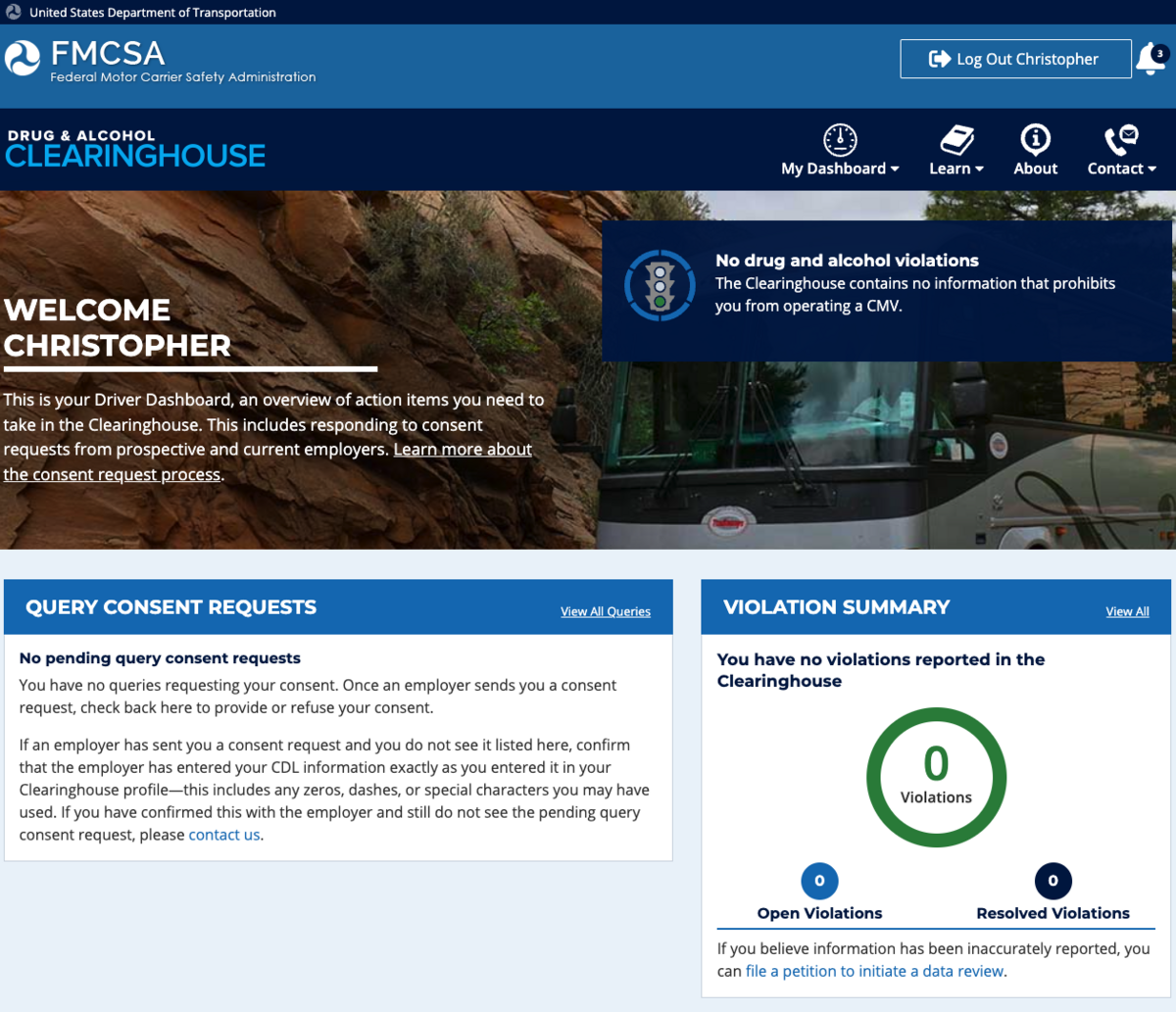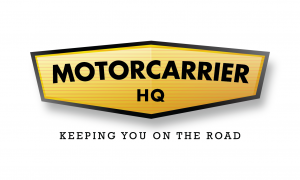January 26, 2023
What is the Drug and Alcohol Clearinghouse

Staying up-to-date with the Department of Transportation’s (DOT) drug and alcohol requirements remains one of the most important tasks required of owner operators. The specific rules and regulations must be followed by every owner operator when they go into business or else it could result in fines, fees, and other penalties against your business that will negatively affect your bottom line. Without proper law observance and careful record maintenance, you can’t get the green light to hit the road.
Lucky for you, there’s a nifty tool that can help you stay on top of it all: The Drug and Alcohol Clearinghouse. This tool is the industry standard for violation recordkeeping and, as a recent addition to the trucking world, it will be your best friend for tracking drug and alcohol violations in the future.
Drug and Alcohol Clearinghouse breakdown
The Drug and Alcohol Clearinghouse is an online database managed by the Federal Motor Carrier Safety Administration (FMCSA) that keeps track of all alcohol and drug violations among drivers. It’s an invaluable tool that can help you vet potential drivers by allowing you to run a search for a driver’s name in real time to see if they have any recorded violations. You will also be able to see records of instances when they refused a drug and alcohol test.
In the old days, owner operators had to contact a driver’s former employer to ask about potential violations, which presented its own unique obstacles. Starting in January 2020, owner-operators could now go straight to the online database to get this information.
Going fully digital has not only made things more accessible for owner operators, it’s also made everything more organized, which helps keep drivers accountable and ensures a certain level of professionalism within the industry. Keep in mind that the database only keeps records from the time it started onward, so it won’t include drug or alcohol violations that happened before January 2020.

Who does it affect?
The database affects you and anyone else on your payroll. Other drivers, carriers, and law enforcement officers can all search the database to view your record and the records of any one of your drivers. These records can help or hinder your reputation and credibility as a business.
Even if you’re the owner of the company, drug and alcohol requirements will still apply to you as a driver, so it’s smart to do a violation inquiry for yourself to see what’s already in the database. Searching is free of charge and it can help you make sure your record is clean and up-to-date. Something you can do to improve your record is to regularly take a drug and alcohol test and submit your results. Over time, this will build a longstanding record of compliance and be a testament of your trustworthy business practices.
The Transportation Compliance Service blog reported there were more than 64,000 substance abuse violations found in this database by April 2021, just over a year after the database was established. Only about 16% of those drivers returned to the roads and only after going through the required steps to rectify their mistakes. Violations can be costly, so many owner operators find joining a consortium — an industry association or group — to be helpful because they can provide additional resources to help ensure you stay compliant and advise you on what to do if you uncover a violation.
Why is it important?
Regularly reviewing driver records in the database is only half of the battle; successful owner operators also make sure they’re informed on what to do if they encounter a violation report on their record or one of their employees. The industry takes these rules seriously and a drug and alcohol violation can cost someone their job. It’s in your best interest to always be aware of new rules or regulations and take the necessary steps to comply with them.
Using the Clearinghouse as a tool is a great first step to manage these violations and protect your company. It also helps to have a written drug and alcohol policy for your CDL drivers to read and sign from the start. The document is usually only a few pages long and the policies are pretty straightforward (don’t drive under the influence, no illegal substances, etc.).
To help you get an idea of what substances you should specifically prohibit in your policy, check out these common questions and answers to DOT’s drug and alcohol regulations on the Motor Carrier HQ blog. Keep in mind that, in addition to alcohol, certain prescribed drugs might raise a red flag during a drug and alcohol screening too. For example, using medical marijuana — even if it’s legal in your state — will still count against you on a drug and alcohol test. Plus, it will show up in the Clearinghouse database since marijuana still isn’t legal on the federal level.
Another way to protect yourself and your company is to make sure your drivers take a drug test before they begin working for you and then regularly test for drugs during their employment. Make sure you keep proof of all negative drug tests. It’s crucial that this test be in your company name; you can’t accept an applicant’s drug test from their former employer.
To learn more about drug testing and access a checklist on what you need to do to get your drug and alcohol requirements in order, listen to the how to meet drug and alcohol requirements episode on our Haulin’ Assets podcast.
Understanding the Drug and Alcohol Clearinghouse can also encourage compliance from your drivers. Once employees submit their clean drug test, their names go into a “driver pool’ of sorts where they can then be randomly selected at any time to take another drug and alcohol test. Drivers who know about the random tests and understand any violations will be permanently recorded on their record are more likely to follow drug and alcohol regulations and adhere to your company’s policies.
Who can use the database?
It’s not only owner operators and other drivers who can access information stored in the Drug and Alcohol Clearinghouse. If you look at the FMCSA website, you’ll see there are six groups who can access this information:
- CDL drivers – any driver in possession of a commercial driver’s license.
- Employers – this includes anyone who employs drivers that require a commercial driver’s license (CDL) or commercial learner’s permit (CLP) to do their job.
- Consortia/third-party administrators (C/TPAs)
- Medical review officers (MROs)
- Substance abuse professionals (SAPs)
- Enforcement personnel
Get more support
Joining a drug and alcohol consortium is one of the most efficient ways you can meet federal testing requirements. They provide additional resources to simplify the testing process, educational courses to train supervisors, and can help you complete the required pre-employment screenings and required testing at lower costs.
The Motor Carrier HQ consortium is one of these associations. Along with the $199 membership, you’ll gain access to a draft policy of the drug and alcohol requirements you’ll need your employees to follow as well as forms and other important documents essential to helping ensure you stay compliant. You’ll also get a drug and alcohol policy book so you can keep yourself up-to-date on the various rules and regulations.
Complying with drug and alcohol laws is just one of many policies that a new owner operator will need to set up and follow during their first year of work. Wherever you’re at in the process of developing your own drug and alcohol policy, we can help. Join the Motor Carrier HQ consortium today and start protecting your business’s future!


